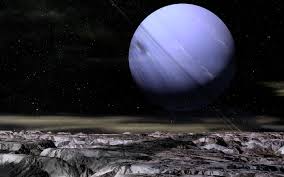Within our solar system lie many wonders, one of which is Uranus, the seventh planet from the Sun, and one of the gas giants. But exactly how big is Uranus? This question opens the door to a fascinating exploration of planetary science, astronomy, and cosmic proportions.
Understanding Uranus: A Brief Overview
Uranus is classified as an ice giant, a subclass of gas giants that includes Neptune. Discovered in 1781 by British astronomer William Herschel, Uranus was the first planet found with a telescope, marking a turning point in our understanding of the solar system. It is the third-largest planet in terms of diameter and the fourth-largest in mass. But its true scale can be difficult to comprehend without comparison and context.
Physical Size: Diameter and Circumference
To address the question “how big is Uranus?” let’s begin with its diameter. Uranus has a diameter of about 50,724 kilometers (31,518 miles) at its equator. This makes it over four times wider than Earth, which has a diameter of about 12,742 kilometers (7,918 miles).
Its polar diameter, however, is slightly smaller due to its oblate shape as a result of its rapid rotation. The equatorial circumference of Uranus is approximately 159,354 kilometers (99,786 miles), a mind-boggling size that means if you could walk around Uranus (assuming it had a solid surface), it would take years.
Mass and Volume
In terms of mass, Uranus weighs in at 8.681 × 10²⁵ kilograms, which is about 14.5 times the mass of Earth. This means if there were a bathtub big enough to fit Uranus, it would float!
Its volume is another staggering number: 6.833 × 10¹³ cubic kilometers, which is about 63 times the volume of Earth. So when we ask, “How big is Uranus?” the short answer is gigantic.
Gravitational Pull
Given its size, one might expect Uranus to have an extremely strong gravitational pull. This means if you could stand on Uranus (which you can’t, because it lacks a solid surface), you would weigh only a bit less than you do on Earth.
Distance and Position in the Solar System
Due to this distance, sunlight takes over 2 hours and 40 minutes to reach the planet. Its orbit takes about 84 Earth years. Comparison with Other Planets.
To truly understand how big Uranus is, let’s compare it with some other celestial bodies:
- Jupiter’s diameter is around 142,984 km, nearly 3 times that of Uranus.
- Neptune: Often called Uranus’s twin, Neptune is slightly smaller in diameter (49,244 km) but has more mass.
- Saturn: Saturn is significantly larger than Uranus, with a diameter of 120,536 km.
These comparisons highlight that while Uranus is not the largest, it is certainly among the heavyweights of the solar system.
Unique Characteristics of Uranus
Aside from size, Uranus is unique in several ways:
- . This causes extreme seasonal variations.
- Ring System: Like Saturn, Uranus has 13 known rings, to be exact, though they are much fainter and darker.
Moons and Magnetosphere
Uranus is orbited by 27 known moons, named mostly after characters from Shakespeare’s plays (such as Titania, Oberon, and Miranda). These moons vary in size and composition, but none are large enough to rival the planet’s massive size.
Uranus also has a complex magnetosphere. Interestingly, the magnetic field is tilted 59 degrees from the planet’s rotational axis and offset from the planet’s center, resulting in an unusual, corkscrew-like magnetic field.
Observing Uranus from Earth
Because Uranus is so far away and relatively dim, it is barely visible to the naked eye under ideal dark-sky conditions. With a good telescope, amateur astronomers can view Uranus as a small, bluish-green disk. Its true scale, however, can only be appreciated through data from telescopes and spacecraft.
NASA’s Voyager 2 remains the only spacecraft to have visited Uranus, flying by in 1986. It provided us with invaluable data on the planet’s size, atmosphere, and moons.
Conclusion
So, how big is Uranus? In every sense of the word, immense. With a diameter of over 50,000 kilometers, a volume 63 times that of Earth, and a mass over 14 times our planet’s, Uranus stands as one of the solar system’s colossal giants. Its icy composition, unique tilt, and system of moons and rings make it not just large but fascinatingly different from its planetary siblings.
Understanding Uranus gives us not only a better appreciation of our solar system’s diversity but also insight into the mechanics of planetary formation and evolution. Whether viewed through a telescope or explored in scientific data, Uranus challenges our perception of size, space, and wonder.



